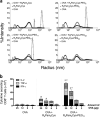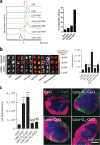Nanomedicine-mediated alteration of the pharmacokinetic profile of small molecule cancer immunotherapeutics
- PMID: 32451411
- PMCID: PMC7471422
- DOI: 10.1038/s41401-020-0425-3
Nanomedicine-mediated alteration of the pharmacokinetic profile of small molecule cancer immunotherapeutics
Abstract
The advent of immunotherapy is a game changer in cancer therapy with monoclonal antibody- and T cell-based therapeutics being the current flagships. Small molecule immunotherapeutics might offer advantages over the biological drugs in terms of complexity, tissue penetration, manufacturing cost, stability, and shelf life. However, small molecule drugs are prone to rapid systemic distribution, which might induce severe off-target side effects. Nanotechnology could aid in the formulation of the drug molecules to improve their delivery to specific immune cell subsets. In this review we summarize the current efforts in changing the pharmacokinetic profile of small molecule immunotherapeutics with a strong focus on Toll-like receptor agonists. In addition, we give our vision on limitations and future pathways in the route of nanomedicine to the clinical practice.
Keywords: cancer immunotherapy; nanomedicine; pharmacokinetic profile; small molecule drugs; stimulator of interferon genes (STING); toll-like receptors.
Conflict of interest statement
The authors declare no competing interests.
Figures












References
-
- Xin Yu J, Hubbard-Lucey VM, Tang J. Immuno-oncology drug development goes global. Nat Rev Drug Discov. 2019;18:899–900. - PubMed
-
- Tang J, Hubbard-Lucey VM, Pearce L, O’Donnell-Tormey J, Shalabi A. The global landscape of cancer cell therapy. Nat Rev Drug Discov. 2018;17:465–6. - PubMed
-
- Nam J, Son S, Park KS, Zou W, Shea LD, Moon JJ. Cancer nanomedicine for combination cancer immunotherapy. Nat Rev Mater. 2019;4:398–414.
-
- Adams JL, Smothers J, Srinivasan R, Hoos A. Big opportunities for small molecules in immuno-oncology. Nat Rev Drug Discov. 2015;14:603–22. - PubMed
-
- Weinmann H. Cancer immunotherapy: selected targets and small-molecule modulators. ChemMedChem. 2016;11:450–66. - PubMed
Publication types
MeSH terms
Substances
LinkOut - more resources
Full Text Sources
Medical
Research Materials

